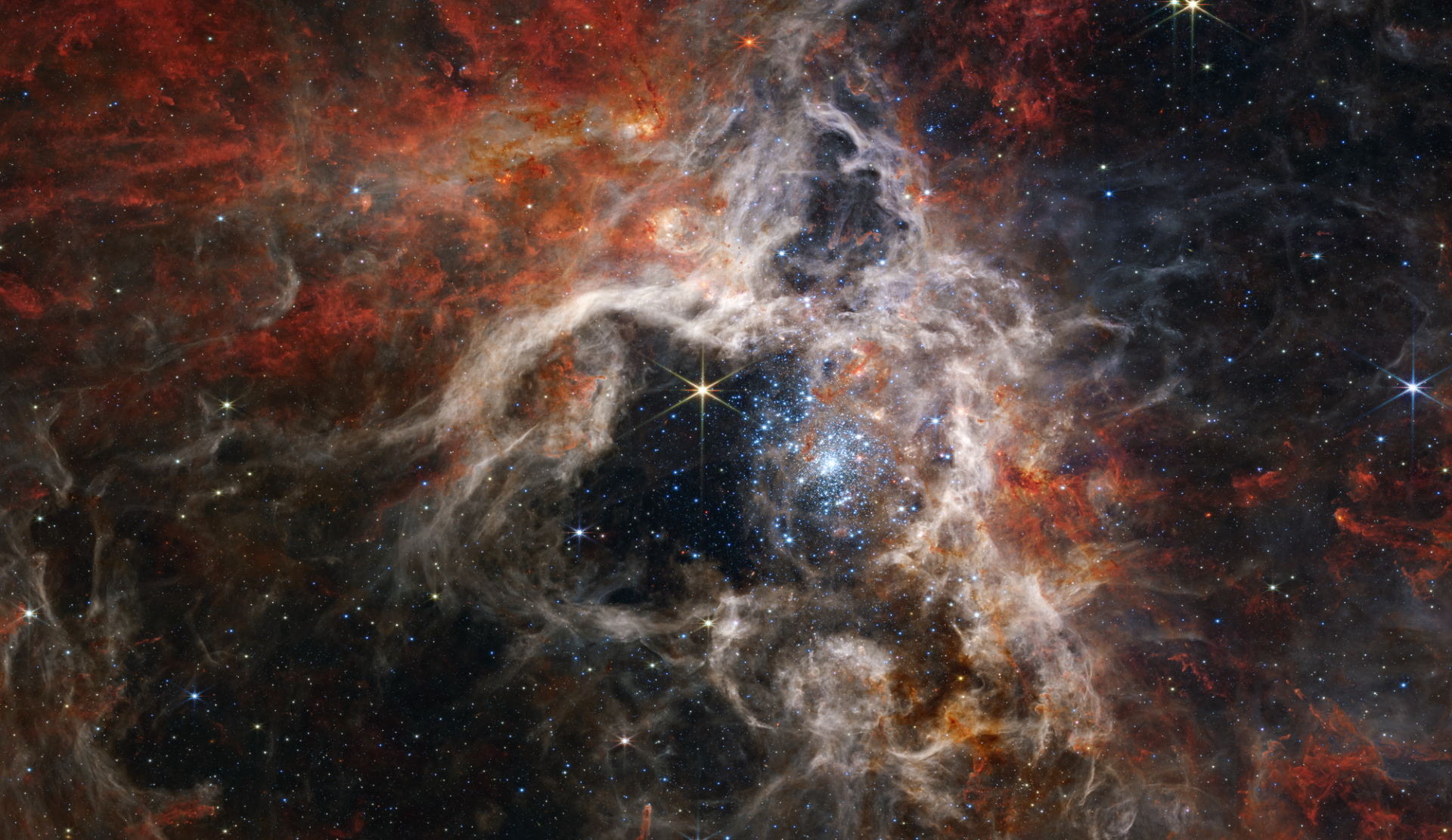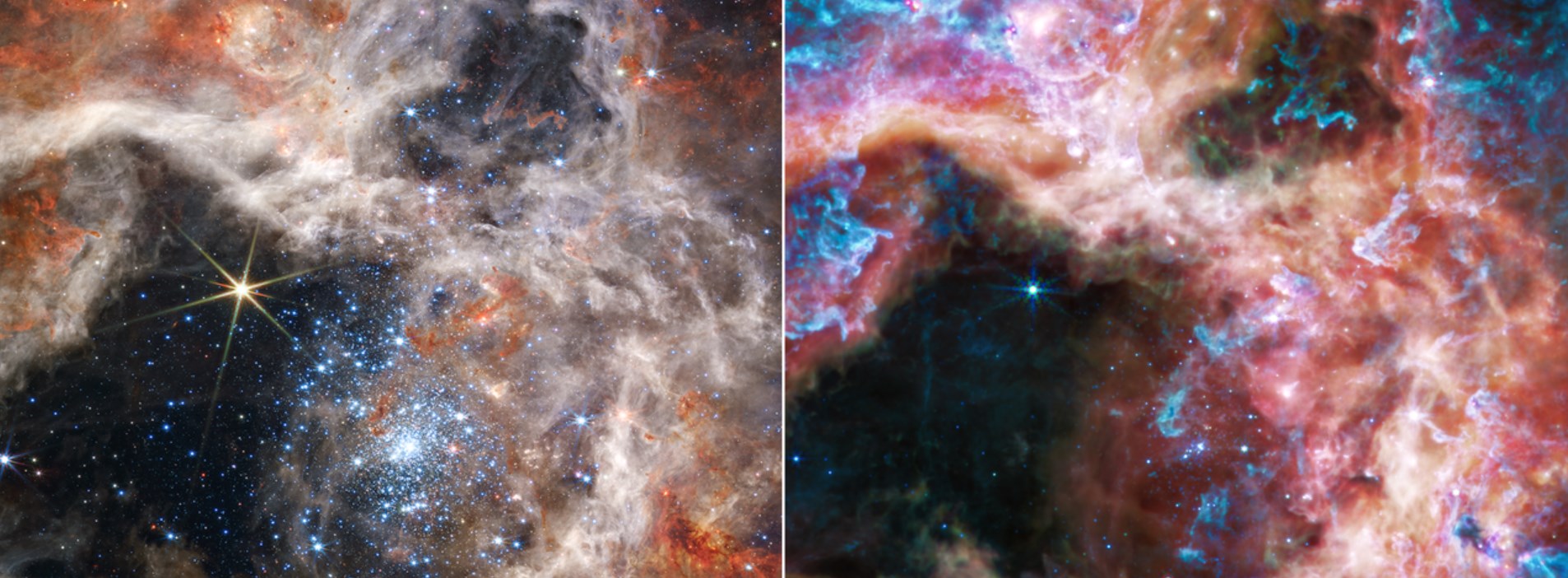The James Webb Space Telescope never ceases to amaze us with its fascinating photographs. The latest photo is a new look at the Tarantula Nebula, a swirling mass of interstellar dust and gas from which stars will soon form. According to NASA, what looks like spider silk surrounds a hollow center where matter has been destroyed by intense radiation.

“James Webb’s impressive images of the Tarantula nebula give us an amazing new look at the stellar nursery in the local universe, showing stars in the early stages of their formation in dense nodes of gas and dust around the central cluster,” says Chris Evans, a researcher at the JWST project.
A nebula is a huge cloud of dust occupying the interstellar medium. Most of them are the cradles of life for new stars. The Tarantula nebula got its name for its resemblance to a tarantula burrow covered with cobwebs.
The Tarantula Nebula is located 161 thousand light-years away in the Large Magellanic Cloud, one of the moons of the Milky Way. Scientists of the JWST project were able to photograph the nebula in all its beauty using a set of infrared telescope instruments. The MIRI medium-infrared instrument on board James Webb was able to see through interstellar dust, since longer waves can penetrate clouds of solid particles.

According to NASA, the brilliant blue stars located to the right of the center created a cavity around themselves, as their radiation “burned out” this area by intense stellar winds. The surrounding areas are incredibly dense and have formed pillars in which young stars called protostars are born.
Scientists are excited to learn more about the Tarantula Nebula, especially because its chemical composition is similar to the “cosmic noon” when the Universe was only a few billion years old. By observing the Tarantula nebula, astronomers can look into the past of the Universe in a certain way.
According to NASA
Follow us on Twitter to get the most interesting space news in time
https://twitter.com/ust_magazine
